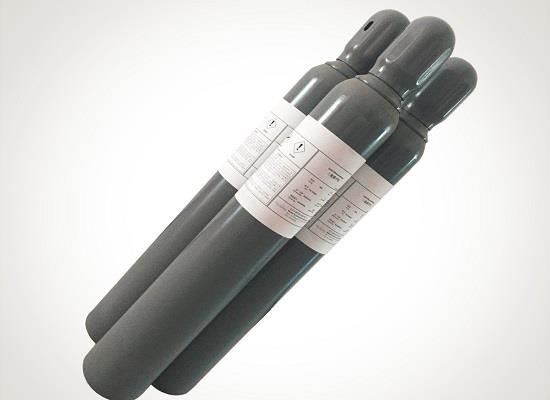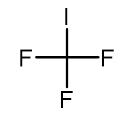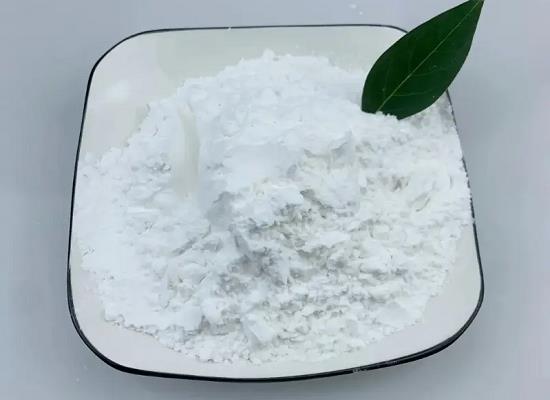Trifluoromethyl iodide: chemical and physical properties, pharmacokinetics and reproductive toxicity
General Description
Trifluoromethyl iodide is a stable and non-flammable gas with specific physical and chemical properties. It has a molecular weight of 195.91 g/mol and exists as a colorless and odorless gas at room temperature. The compound has a low solubility in water and is slightly soluble. It is not flammable and does not have a flash point or autoignition temperature. Trifluoromethyl iodide is stable under normal temperatures and pressure but can decompose to form acid halides. Limited data is available on its pharmacokinetics, but it is believed to undergo minimal metabolism and rapidly reach equilibrium between air and blood. Reproductive toxicity studies in rats showed no significant effects on reproductive parameters, although changes in thyroid hormones were observed. Overall, Trifluoromethyl iodide is considered to have low reproductive toxicity.

Figure 1. Trifluoromethyl iodide
Chemical and physical properties
Trifluoromethyl iodide is a chemical compound with a molecular weight of 195.91 g/mol. It is a colorless and odorless gas at room temperature. Trifluoromethyl iodide has a melting point of -110°C (-166°F) and a boiling point of -22.5°C (-8.5°F). Its physical state is that of a gas, and it has a vapor pressure of 78.4 psia at 25°C (77°F). The density of trifluoromethyl iodide is 2.5485 g/cm3 at -78.5°C (-109.3°F). It has a vapor density of 6.9 compared to air. This compound is not flammable and does not have a flash point or autoignition temperature. Trifluoromethyl iodide is slightly soluble in water, and its solubility in water is low. It is stable under normal temperatures and pressure. However, upon decomposition, it may form acid halides such as hydrogen fluoride (HF) and hydrogen iodide. This compound does not undergo polymerization and is incompatible with oxidizing materials. It is important to handle trifluoromethyl iodide with care and avoid contact with substances that can cause oxidation reactions. In summary, trifluoromethyl iodide is a stable and non-flammable gas with specific physical and chemical properties.1
Pharmacokinetics
Trifluoromethyl iodide is a compound with limited available data regarding its pharmacokinetics. Specifically, there are no specific studies addressing its half-life or rate of metabolism. However, researchers have developed physiologically based pharmacokinetic models for fire suppressants, including Trifluoromethyl iodide. These models suggest that Trifluoromethyl iodide undergoes a low degree of metabolism and quickly reaches equilibrium between the air and blood in the workplace environment. The equilibrium is achieved within minutes after exposure. During the development of these models, partition coefficient studies were conducted to assess the distribution of Trifluoromethyl iodide. It was found that rats have a higher blood-to-air partition coefficient (1.75) compared to humans (0.97). This implies that, at a given concentration of Trifluoromethyl iodide in the lungs, a greater amount would be taken up into the systemic circulation of rats compared to humans. In summary, Trifluoromethyl iodide has limited metabolism, and its concentrations rapidly equilibrate between the air and blood in the workplace environment. The partition coefficient differences between rats and humans suggest a potentially greater systemic uptake of Trifluoromethyl iodide in rats. 2
Reproductive toxicity
Trifluoromethyl iodide is a chemical compound that has been studied for its reproductive toxicity in male and female Sprague-Dawley rats. In an inhalation study, rats were exposed to Trifluoromethyl iodide for 4 weeks prior to mating and throughout gestation and lactation. The study found no significant effects on reproductive parameters, but there was a decrease in male-to-female pup sex ratio at the highest concentration. However, this was considered to be a spurious finding as it fell within the range of historical control incidence. Although there were no treatment-related clinical findings, a decrease in body weight was observed in female parental rats at the highest concentration. There were also some changes in blood chemistry or hematology, but these were not toxicologically significant. Moreover, significant effects were observed on thyroid hormones in both male and female rats, with alterations in TSH, T4, T3, and rT3 at all concentrations. However, no morphological changes were observed in the thyroid. Evaluation of organ weights of parental animals did indicate some effects at higher concentrations, but these were not Trifluoromethyl iodide treatment related adverse effects. Based on the lack of histopathological effects, the study authors concluded that Trifluoromethyl iodide exposure did not cause adverse effects related to reproductive toxicity. 1
Reference
1. Trifluoroiodomethane (CF3I) (2019). Toxicol Ind Health, 2020, 36(5): 310-321.
2. Vinegar A and Jepson GW. Cardiac sensitization thresholds of halon replacement chemicals predicted in humans by physiologically-based pharmacokinetic modeling. Risk Analysis: An Official Publication of the Society for Risk Analysis, 1996 16(4): 571–579.
Related articles And Qustion
Lastest Price from Trifluoromethyl iodide manufacturers

US $0.00/KG2025-11-21
- CAS:
- 2314-97-8
- Min. Order:
- 2000KG
- Purity:
- 99.9%
- Supply Ability:
- 20tons

US $0.00/kg2025-04-04
- CAS:
- 2314-97-8
- Min. Order:
- 25kg
- Purity:
- 99%
- Supply Ability:
- 1ton




